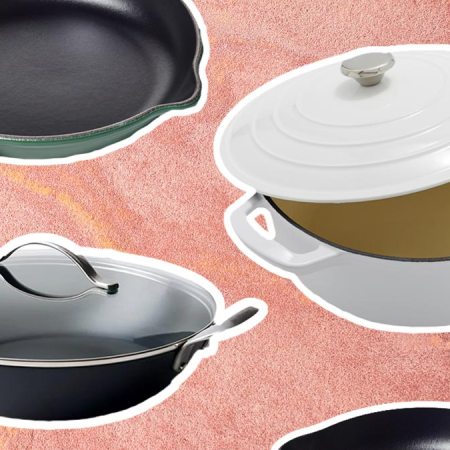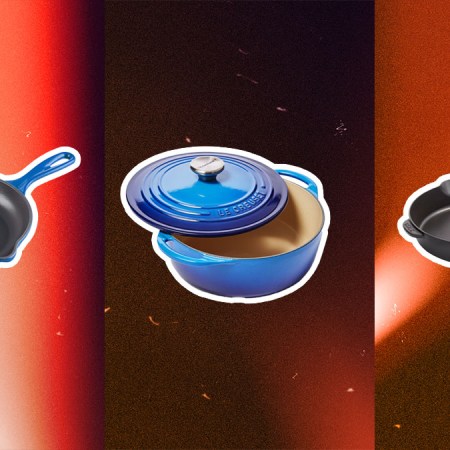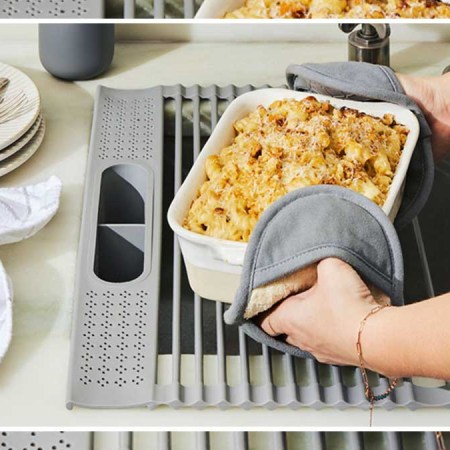A chef’s only as good as his tools.
And if he wants the best tools in town — well, we’ve got some good news on the knife front.
Town Cutler makes superior, handmade knives for next-level cooks. (And those aspiring to be among their ranks.)
They’re created by Galen Garretson, a one-time chef in top Bay Area kitchens, like Quince, who decided his heart was, after all, in the crafting of knives: “We needed something that kept a really fine edge and that was easy to sharpen,” he says. “A lot of things out there were a softer type of steel.”
Armed with this brief, Garretson set up a warehouse in Oakland where he and his staff could create, by hand, his ideal knives: perfectly balanced, resistant to age, made of top materials and guaranteed for a lifetime of work.
He sells them at Town Cutler’s Bush Street spot, where he offers a tightly curated array of knife-centric goods, along with sharpening services; he also holds classes in knife sharpening through the San Francisco cooking school.
If you’re looking to up your kitchen game, look there first.
Below, we talk to him about what makes a knife excellent, why he reveres antique knives and why a sharp blade makes for a tastier meal.
InsideHook: If I’d known you as a kid, would I have thought you’d be a chef or a maker of beautiful goods?
Galen Garretson: I think I’m better at making knives than actually cooking.
IH: When you were working in the kitchen, what did you find you were looking for in terms of knives?
GG: We just needed something that could hold an edge and that was easy to sharpen. Harder steel can hold an edge a lot longer and get a finer edge. There’s a grain structure in steel, and some steels will have a finer grain structure — they can get a finer edge, which means that you can get a sharper cut. That way, you’re not bruising your herbs — if you’re cutting herbs and they turn brown, it’s because your knife isn’t sharp. Something with a really sharp edge will stay nice — and your herbs will stay green, with a lot more flavor to them.
IH: So the quality in the edge of the knife makes a contribution to the taste of the food prepared?
GG: Yeah. Onions are another good example. If you have a dull knife, then you have a tendency to break the cells open, and then you can cry a lot more when you’re cutting them. If you have a really sharp knife, then you’re not breaking open the cells as much, and you’re less likely to have those oils in the air. But that can change how the onion cooks as well, same as any other vegetable.
IH: How does that work?
GG: If you have a dull knife and you bruise an onion, for example, you might not get the proper caramelization and proper flavor. To be clear, this is on a really fine scale — you’re not going to have like really crappy food with a dull knife.
IH: I know you have an interest in antique knives. Why?
GG: I like old knives because of the carbon steel aspect. Stainless steel didn’t really come around until the ’70s or so in knives. Things that were a lot older — like 100-year-old knives — were carbon steel. Those are the knives that oxidize and change color. Getting into the molecular makeup of that, when you have stainless steel, what makes it stainless is chromium, and when you add chromium to steel, you get a larger grain structure. Without it, you have carbon steel, which has that finer grain structure so it can get a lot sharper.
IH: How many knives does a home chef need?
GG: I recommend two. Maybe a third, depending on what you’re doing. The first would be a chef’s knife, something around eight or eight and a half inches away. The second would be a paring or utility knife — a five or six inch knife, like a smaller chef’s knife, for precision cutting and delicate things.
IH: And what about you? Do you have a wide array of knives at home or just a couple?
GG: Just one or two — all chef’s knives.
IH: Where do the world’s best antique knives come from?
GG: I look to Japan, and Germany and France. They had great steel. We’re influenced by both German and Japanese knives.
IH: Where did you learn to cook?
GG: I’m from Nevada — Carson City, about minutes from Reno.
IH: Near Tahoe?
GG: Kind of like that, but with a lot more meth and crime.
IH: So — not great.
GG: Tahoe’s pretty, and Reno’s great, but Carson’s where all the brothels are.
IH: So how do you come from there to making artisanal knives?
GG: I moved to San Francisco to go to culinary school. My dream was to cook. I cooked at a steakhouse in Nevada, and the chef taught me all the basics of cooking. I wanted to go to a real food city like San Francisco.
IH: That has to have been a big change, to go to S.F. from a steakhouse next to a brothel.
GG: The chef who ran it was really, really nice dude — long hair, cut-off shorts, a rock ’n’ roll dude. Total partier. He had to drink a pint of vodka before he could start talking in the morning — but the sweetest guy ever. He took care of everyone. He’d open the place up for lunches just so I could learn how to run a business from the ground up. He gave up everything just to teach you that stuff. He got me into the culinary world, which brought me into knives.
If you’re more in the mood for eating out than cooking in, try Garretson’s picks for his favorite local meals.
#1: “Hands down my favorite meal would be enjoying a plethora of pasta dishes at Cotogna, with a couple Wolfe Ranch quails for dessert.”
#2: “No matter where you sit at House of Prime Rib it’s one of the best and most consistent steaks in town. If I get the bone-in cut, that will come home for my cat to gnaw on.”
#3: “The Sinaloa Taco Truck on International and 22nd Ave. in Oakland has the most mind blowing crispy carnitas tacos I have ever had! It’s the best thing to eat during a heavy day of knife making at our warehouse, which is just a few blocks away.”
#4: “It’s not often that we get out of town, but when we head up north we always stop off in Bodega Bay at Spud Point Crab Company for the most amazing crab sandwiches and garlicy-herby clam chowder.”
#5: “After cleaning off all the steel and grease from my hands, I love to finish a day at Enssaro in Oakland for some killer Ethiopian food.”
This article was featured in the InsideHook SF newsletter. Sign up now for more from the Bay Area.





















